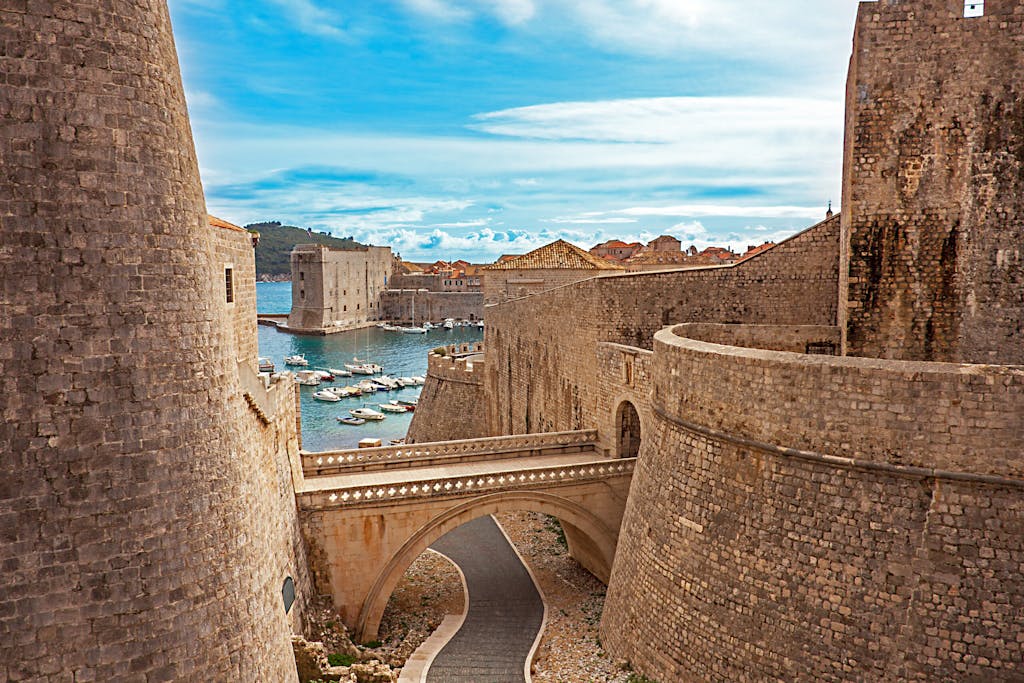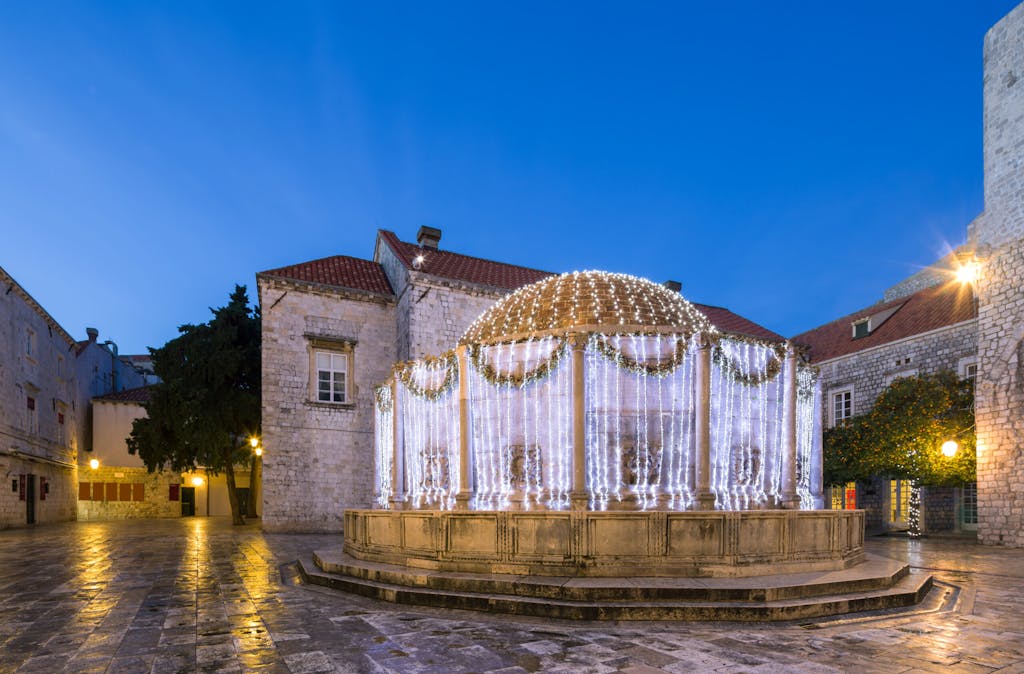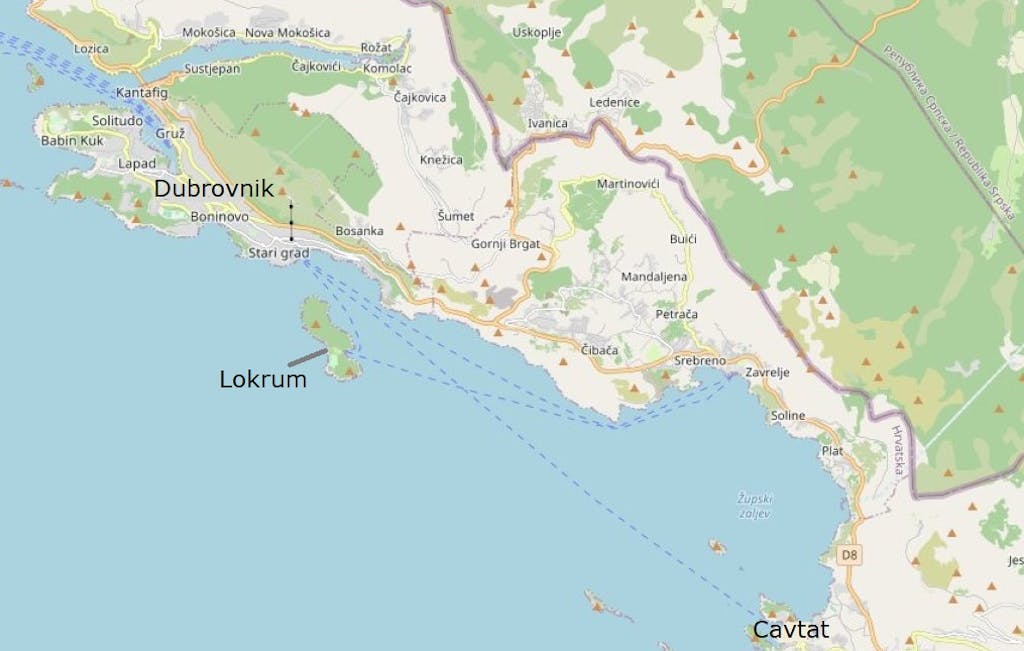In Dubrovnik, Embrace ‘Game of Thrones’ and Expand Boundaries to Lokrum and Cavtat
I walked along the thick stone walls of Dubrovnik’s old city, looking toward the Adriatic Sea for any sign of pirates or enemy ships. Too late. Invaders had already breached the main gate and were busy conquering Croatia’s best-known medieval fortress.
Fans were coming to see the fictional King’s Landing, a key setting in the medieval fantasy HBO TV series “Game of Thrones.” Dubrovnik’s old city was one of the filming sites, and although the original series ended in 2019, its legacy lives on and is one of the top things to do in Croatia.

As crowds swelled that mid-October day, I remained above the fray, trekking along protective walls that rise more than 80 feet. I grasped their historic importance in protecting trade routes, whether Dubrovnik was under the rule of the Byzantine Empire, the Venetian Republic or Napoleon.
From my perch, I could peer through stone lookouts to see sweeping views of the village outside the walls, tightly packed pale-yellow buildings with light red roof tiles, an architectural fantasy land with a medieval heart. Vehicles aren’t allowed inside the walls, which means competition for space on the narrow and sometimes steep walkways.

I made my way down to see the beautiful 16-sided Onofrio’s Fountain, a key cistern that provided drinking water, and the Sponza Palace, a government building with facades that mix Gothic and Renaissance designs. Cafés and shops were crowded. It started to feel as though the walls were keeping folks in, not out.
I took a page from the ancients and headed for the Old Harbor in search of a boat that would whisk me away. It was just the ticket.
Lokrum is just a ferry ride away

I arrived at the dock and hopped a ferry to the small island of Lokrum about 15 minutes away. From atop the old city’s walls, I remembered seeing what looked like a green canopy floating in the Adriatic.
That was Lokrum, a speck of an island thick with groves of cypress, olive and pine trees. You can’t stay overnight, but you can wander freely or just kick back amid pretty gardens where peacocks roam.

I started walking on footpaths through botanical gardens, feeling cooler and calmer with each step.
The payoff of the fort trek: wide views of the sea and Dubrovnik. Roaming the island was the tonic I needed; the simple act of placing one foot in front of the other had restored me.
King Richard I of England, I read later, supposedly was shipwrecked on Lokrum when he was returning from one of his religious Crusades in the late 12th century. Not a bad place to be stranded, I’d say.
Cavtat’s a gem of a find

After several hours, I was ready to return to Dubrovnik — not to stay but to find another quiet place. Again, my luck held.
I returned to the harbor and quickly boarded a boat to Cavtat, another destination I hadn’t planned on visiting. This resort town about 30 minutes away is one of the southernmost resorts in Croatia, close to the border with Montenegro. (Silver Spirit passengers also have the option of taking an excursion to Cavtat.)
When the ferry pulled into a pretty little harbor lined with small hotels and cafés, I immediately knew I had made the right decision. Although it was a warm day, I didn’t feel the urge to swim in the ocean. Instead, I sat in a beach lounge chair facing the water, people-watching and hitting my personal pause button.
The island had been a Greek settlement in the 4th century BC and later a Roman colony. I let those thoughts percolate as I absorbed the beauty of the Adriatic in a place where the pace of day-to-day life was slow and cafés served as many fresh Mediterranean vegetables as I could eat. I felt rejuvenated.
Perhaps some of those fictional characters from the “Game of Thrones” could have used a day away, too!
Are you intrigued by the real and the imagined King’s Landing? Learn more about things to do in Croatia here.
